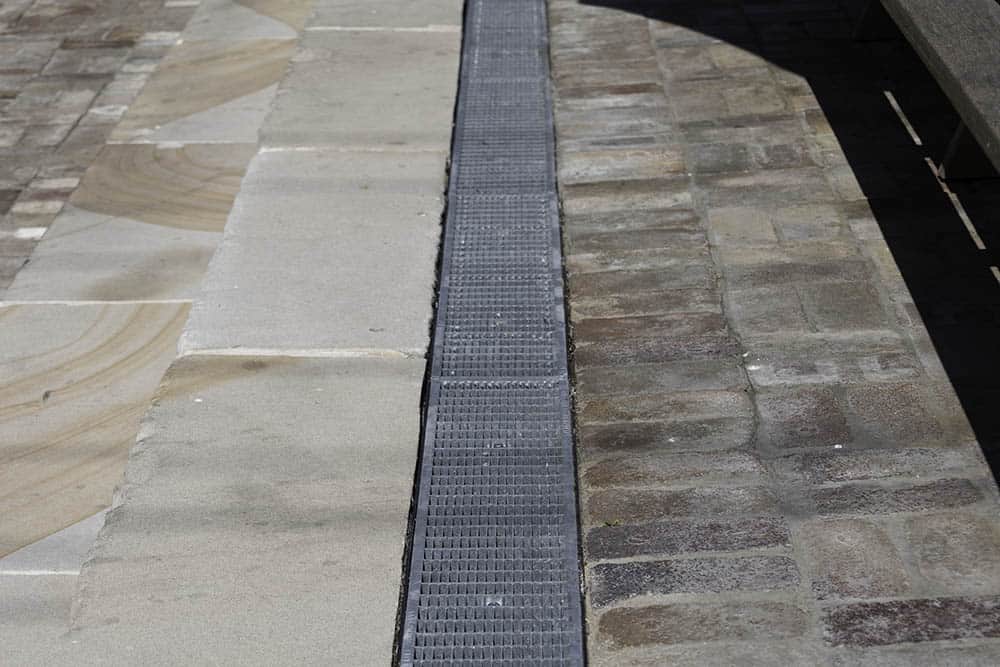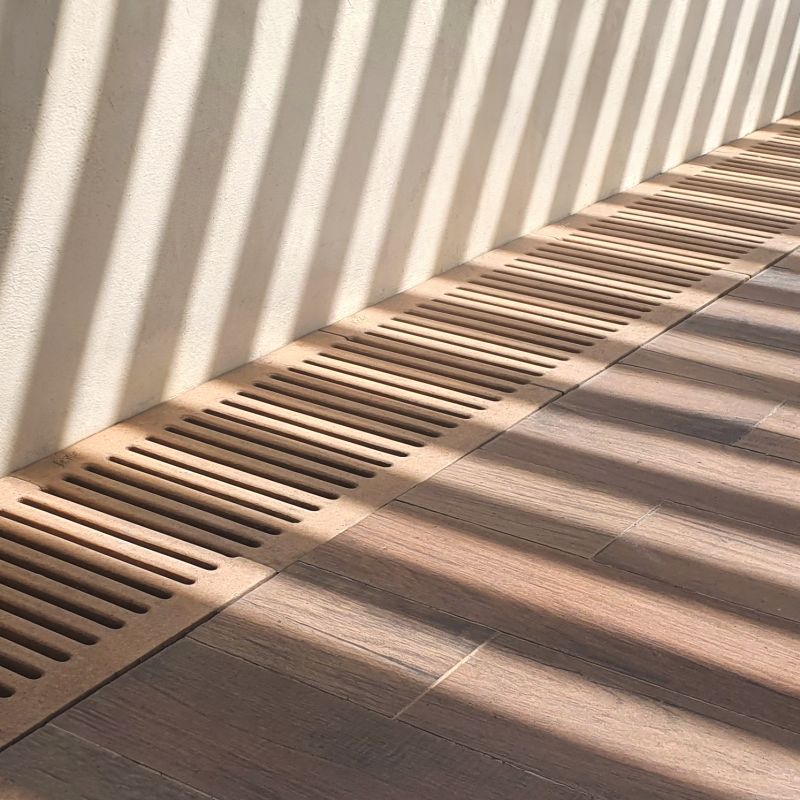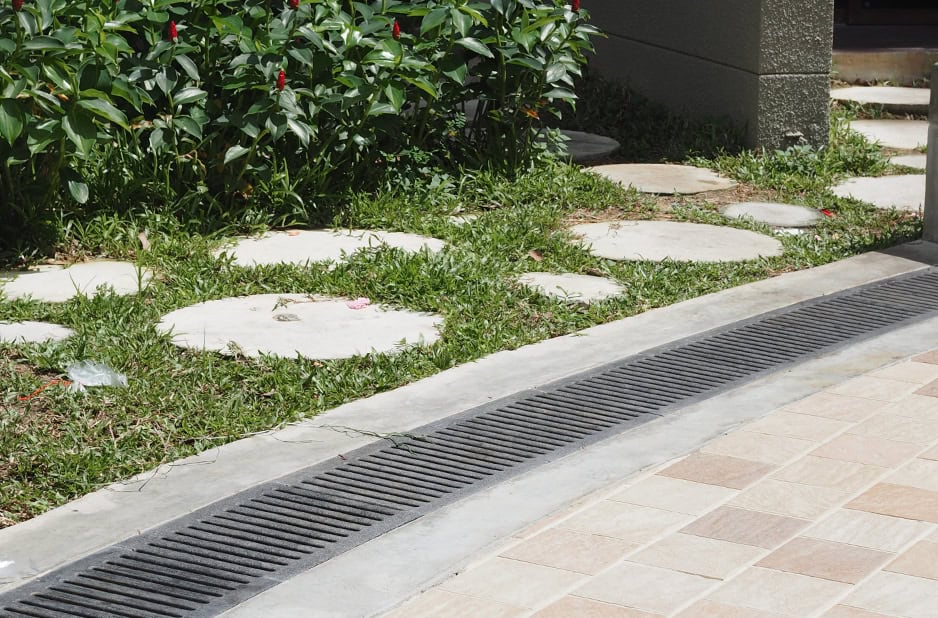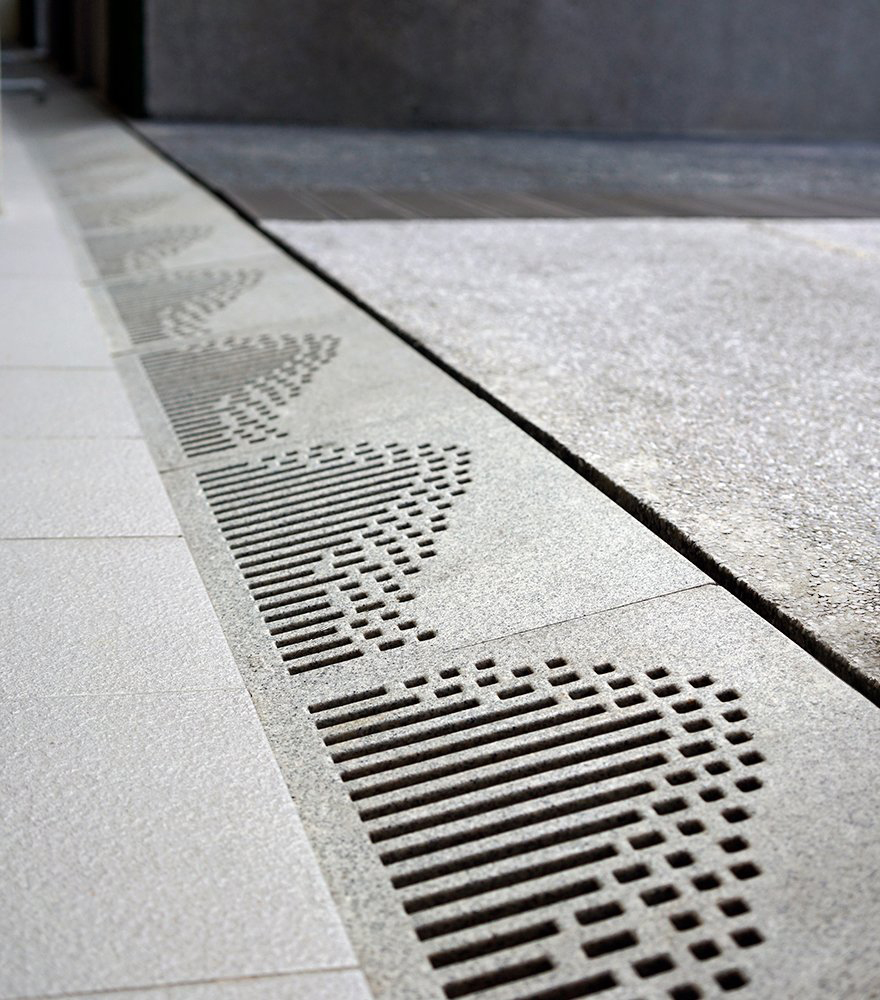Improper grading, overwatering, heavy rain and uneven ground can all lead to standing water on your property. This is an issue you cannot ignore. Standing water can lead to major foundational issues with your home. The most effective solution for standing water issues is to install a landscape drainage system.
Landscape Drainage Solutions
Landscape drainage refers to the water flow in a specific area. Two factors affect this drainage – land, grading and soil type.
Grading is critical for landscape drainage- ideally, grading will direct water away from your home. Flat land will not allow water to drain, creating a risk for pooling. If the slope does not drain away from your home, water will be directed toward your house, leading to flooding and structural damage.
Soil type refers to how your soil is made up – sand, silt or clay. Sandy or rocky soils drain faster than clay soils due to particle size being larger. Clay soils form a dense mass that tends to prevent drainage.
You can help eliminate pooling water risks by installing a landscape drainage system, such as a trench drain with a suitable outdoor drainage grate.
Outdoor Drainage Grates
There are various forms of landscape drainage, each with benefits and disadvantages. This includes french drains, dry creeks, permeable pavers or rain gardens. The traditional trench drain with grate is an effective solution, since they can handle larger amounts of water.
An outdoor drainage grate is the grate that sits on top of a trench drain channel. They feature holes, slits or other openings to permit water to flow through them and into the channel below. Drainage grates can be made out of cast iron, galvanised steel, stainless steel, stone and other materials.
What are outdoor drainage grates used for?
Trench drains require a grate to cover the channel, without a grate the channel is a tripping risk, as well as open for debris to fill the channel and potentially cause blockages. A drainage grate prevents large debris items from blocking the channel which allows for water to flow and drain effectively.
Design Considerations
Understanding your specific drainage requirements, the layout of your outdoor space, and the overall aesthetic of your property can all play a crucial role in determining the most suitable trench drain system.
- Water FlowOne of the primary considerations is the volume of water that needs to be managed. Factors such as the size of your property, the slope of the land, and the frequency and intensity of rainfall in your area will all influence the required capacity of your trench drain system. Choosing a drain that is too small may lead to water overflow and potential flooding, while an oversized drain could be an unnecessary expense.
- AestheticsThe aesthetic of the trench drain is another important consideration, as it needs to complement the overall design of your outdoor space. Grate styles, colors, and finishes can all be customized to suit your preferences and create a cohesive look. For a more modern, minimalist aesthetic, you might opt for a linear drain with a sleek, stainless steel grate. If you’re looking for a more traditional or rustic vibe, a channel drain with a cast iron or decorative metal grate could be the perfect fit.
- Anti-Slip OptionsAn important option if the drain is installed in high traffic areas.
- Load class refers to the appropriate load rating that a grate can withstand. Learn more about load ratings in our article.
- SecurityMost grates have a lockdown mechanism to ensure the grate remains rattle free & secure.
Drainage with Design & Practicality
Without proper drainage, your property may suffer from ponding, soil erosion and potentially even costly foundational damage. Trench drains are effective, efficient form of drainage. Outdoor drainage does not have to be boring, trench grates now come in a variety of designs, sizes and materials to match the aesthetics of the property.



